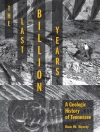Physics of Fluid Flow and Transport in Unconventional Reservoir Rocks
Understanding and predicting fluid flow in hydrocarbon shale and other non-conventional reservoir rocks
Oil and natural gas reservoirs found in shale and other tight and ultra-tight porous rocks have become increasingly important sources of energy in both North America and East Asia. As a result, extensive research in recent decades has focused on the mechanisms of fluid transfer within these reservoirs, which have complex pore networks at multiple scales. Continued research into these important energy sources requires detailed knowledge of the emerging theoretical and computational developments in this field.
Following a multidisciplinary approach that combines engineering, geosciences and rock physics, Physics of Fluid Flow and Transport in Unconventional Reservoir Rocks provides both academic and industrial readers with a thorough grounding in this cutting-edge area of rock geology, combining an explanation of the underlying theories and models with practical applications in the field.
Readers will also find:
* An introduction to the digital modeling of rocks
* Detailed treatment of digital rock physics, including decline curve analysis and non-Darcy flow
* Solutions for difficult-to-acquire measurements of key petrophysical characteristics such as shale wettability, effective permeability, stress sensitivity, and sweet spots
Physics of Fluid Flow and Transport in Unconventional Reservoir Rocks is a fundamental resource for academic and industrial researchers in hydrocarbon exploration, fluid flow, and rock physics, as well as professionals in related fields.
قائمة المحتويات
Preface
List of Contributors
Introduction
Chapter 1: Unconventional reservoirs: Advances and challenges
Part I Pore-scale characterizations
Chapter 2: Pore-scale simulations and digital rock physics
Chapter 3: Digital Rock Modeling: A Review
Chapter 4: Scale dependence of permeability and formation factor: A simple scaling law
Part II Core-scale heterogeneity
Chapter 5: Modeling gas permeability in unconventional reservoir rocks
Chapter 6: NMR and Its Applications in Tight Unconventional Reservoir Rocks
Chapter 7: Tight Rock Permeability Measurement in Laboratory: Some Recent Progress
Chapter 8: Stress-Dependent Matrix Permeability in Unconventional Reservoir Rocks
Chapter 9: Assessment of shale wettability from spontaneous imbibition experiments
Chapter 10: Permeability Enhancement in Shale Induced by Desorption
Chapter 11: Multiscale Experimental Study on Interactions Between Imbibed Stimulation Fluids and Tight Carbonate Source Rocks
Part III Large-scale petrophysics
Chapter 12: Effective permeability in fractured reservoirs: Percolation-based effective-medium theory
Chapter 13: Modeling of fluid flow in complex fracture networks for shale reservoirs
Chapter 14: A Closed-Form Relationship for Production Rate in Stress-Sensitive Unconventional Reservoirs
Chapter 15: Sweet Spot Identification in Unconventional Shale Reservoirs
Index
عن المؤلف
Behzad Ghanbarian, Ph D is Associate Professor of Engineering Geology and Director of the Porous Media Research Lab in the Department of Geology, Kansas State University, Manhattan, Kansas, USA.
Feng Liang, Ph D is Production Technology Leader at Aramco Research Center Houston, Aramco Americas, Houston, Texas, USA.
Hui-Hai Liu, Ph D is a Senior Petroleum Engineering Consultant at Aramco Research Center Houston, Aramco Americas, Houston, Texas, USA.












